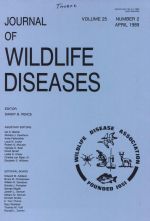This study evaluates a technique for delivering an oral rabies vaccine to wild raccoon (Procyon lotor) populations. Various baits and attractants were first tested on caged raccoons and baiting trials were then conducted in two distinct physiographic regions of Virginia (USA), the coastal plain and the Piedmont plateau. Raccoon population density studies preceded the field trials. Each polyurethane sponge bait distributed contained approximately 200 mg tetracycline as a tissue biomarker, and was presented in an outer bag with a fish-based attractant. Baits were frozen until used and distributed from an aeroplane throughout two 4-km2 sites in each region. One site received 450 baits/km2 and the other 120 baits/km2. Postbaiting evaluation included the direct observation of baits in the field and the examination of teeth and bone from trapped and hunted animals for evidence of the biomarker. Between 30% and 73% of the captured animals showed evidence of bait consumption. The proportion of animals with evidence of bait uptake changed when areas adjacent to the actual baiting site were included. The percentage of animals taking baits was not related to the density of baits that were distributed.
How to translate text using browser tools
1 April 1989
A STUDY OF TECHNIQUES FOR THE DISTRIBUTION OF ORAL RABIES VACCINE TO WILD RACCOON POPULATIONS
B. D. Perry,
N. Garner,
S. R. Jenkins,
K. McCloskey,
D. H. Johnston

Journal of Wildlife Diseases
Vol. 25 • No. 2
April 1989
Vol. 25 • No. 2
April 1989
baiting
field study
Oral rabies vaccine
Procyon lotor
rabies
raccoons




